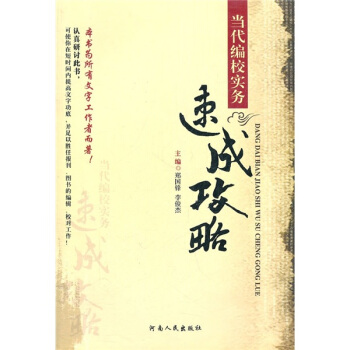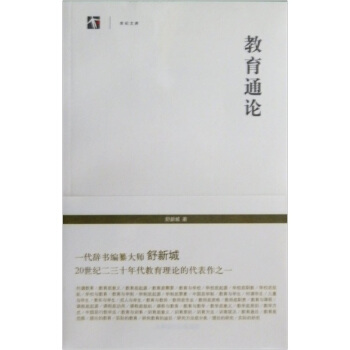![翻译文体学研究 [Stylistic Approaches to Translation]](https://pic.windowsfront.com/10775920/c2145f6c-ad59-4022-afbe-72398d2555a3.jpg)

具体描述
内容简介
《翻译文体学研究》首先追溯了早期的文体观,阐明文体对翻译的影响,又从读者视角和译者视角分别探讨文体的作用和文体再创作过程中的选择。作者随之提出翻译研究的认知转向和文体学的认知观,最后全面总结翻译研究的文体学途径,并介绍其在翻译实践中的作用。作者简介
博厄斯·贝耶尔,东英吉利大学高级讲师,教授翻译和文体学。在相关领域著作颇丰,除合作主编了《文学翻译实践》(The Practices of Literary Translation)外,还编撰了《看得见的诗人》(Visible Poets)等系列诗歌集。内页插图
目录
AcknowledgementsIntroduction: Style in Translation
1. The Role of Style in Translation
1.1 Reading and writing style in translation
1.2 Before stylistics: the spirit of a text
1.3 Universals of style and creative transposition
1.4 Contextual, pragmatic and cognitive aspects of style and translation
1.5 Relativity and thinking for translation
1.6 Translating literary and non-literary texts
2. Theories of Reading and Relevance
2.1 Reading, style and the inferred author
2.2 Implication, relevance and minimax
2.3 Relevance theory and translating for relevance
3. The Translator's Choices
3. l Style and choice
3.2 Clues, games and decisions
3.3 Recreated choices in translation
4. Cognitive Stylistics and Translation
4.1 The cognitive turn in stylistics and translation studies
4.2 Translating the mind in the text
4.3 Ambiguity and textual gaps
4.4 Foregrounding, salience and visibility
4.5 Metaphor, mind and translation
4.6 Iconicity, mimesis and diagesis
4.7 Cognitive stylistics and the pretence of translation
5. A Stylistic Approach in Practice
5.1 Elements of a stylistic approach to translation
5.2 Using style to translate mind
5.3 Ambiguous translation
5.4 Attracting attention: patterns and other deviant structures
5.5 Metaphorical thought translated
5.6 Keeping the echo: translating for iconicity
6. Conclusion
Bibliography
Index
精彩书摘
Views of the nature and importance of reading vary greatly, however, inthe degree of open-endedness they envisage, and the role they assign to sty-listic features of the text. Put simply, the question for translation is this: ifmeaning cannot simply be read off from the source text ((i) above) and meas-ured against the real world ((ii) above), how does the translator find it?Whatever answers we give to this question will apply equally to the readersof the target text. The answer a formalist critic such as Jakobson would havegiven would have been that, for any text, meaning was put there by the au-thor (cf. Hirsch 1967; Dowling 1999:x), whose intention drove a set oflinguistic choices. These choices, which constituted the style, could be un-covered in the text by the reader. Through close stylistic analysis of the text,such as was also favoured by English close-reading critics like Richards(e.g. 1924) or American New Critics such as Wimsatt (1954a), the readercould then decode the meaning which in every sense preceded the text.Dowling's parallel is the Rosetta Stone, which, he says, had meaning beforeit was decoded (1999:16). The comfortable notion that meaning was put intoa text by its author, to be decoded and re-encoded by the translator, makesthe job of a translator, if not straightforward, at least clearly defined.But though the New Critics shared with the formalist critics the viewthat meaning resides in the text, they did not necessarily equate it with themeaning intended by the author. Beardsley (1982:189), for example, statesexplicitly that knowledge of an author's intentions will not help the reader orcritic to interpret a text; the belief that it will is the "intentional fallacy"(Wimsatt 1954b). It is not what the author intended, but what a text actuallysays, that makes interpretation possible. The author's choices which underliestyle thus become less important: the translator must pay close attention tothe style itself and it will reveal the meaning to be transferred into the targetlanguage.
A writer like Fish to some extent opposes both these views: it is thereader who creates the interpretation; however, the reader always tries "todiscern and therefore to realize an author's intention" (1980:161). But"intention" is here not to be understood in a narrow sense; it is simply arecognition that readers "are dealing with intentional beings" (ibid.) whenthey read a text. This does not, in Fish's view, lead to a notion of concrete-ness or stability of meaning; but there is a "community" (ibid.) of readerswho will agree to some extent. This suggests that a translator must be awareof such commonality of interpretation, a view endorsed by Snell-Hornby,who emphasizes the role of "group convention" (1995:24), particularly ifispecialized texts.
……
用户评价
这本书的叙事节奏非常独特,它没有采用传统的章节点分法,而是更像音乐的乐章递进。开篇的引言部分,就用一种近乎文学评论的笔法,奠定了全书的基调——即翻译过程本身就是一种风格的重塑。我特别喜欢作者处理“不可译性”问题的方式,不是将其视为障碍,而是看作风格生成的新契机。书中对不同语言体系下“韵律感”的讨论尤其精彩,那种对声音和节奏在视觉文本中如何被感知和重构的分析,简直是大师手笔。虽然我承认有些地方的论证跳跃性较大,需要读者自行填补逻辑链条,但这反而增强了阅读的参与感,让人觉得自己也是共同的探索者,而非被动的知识接收者。
评分这本书的排版和装帧设计本身就传达出一种强烈的“风格”意识。它的用词考究,很多地方的句子结构甚至模仿了它所探讨的某些语言风格的特点,形成了一种“自反性”的阅读体验。我发现,读完之后,我对“忠实”这个词的理解彻底被颠覆了。它不再是字面上的对应,而是一种情感、意图和审美倾向的继承。最让我难忘的是,它用一种非常克制和优雅的方式,揭示了权力结构对翻译实践的无形塑造。这种对宏大背景的洞察,隐藏在对细微语言现象的观察之中,需要极高的专注力才能捕捉到。这是一部需要静下心来,慢慢品味的著作,不适合碎片化的阅读习惯。
评分坦白说,这本书的学术深度令我感到既兴奋又有些不知所措。它显然不是写给初学者的,其中穿插的大量跨学科的引用,从符号学到现象学,都要求读者具备相当的背景知识储备。我尤其欣赏作者在构建理论框架时的那种宏大叙事,仿佛在搭建一座通往未知语言景观的桥梁。然而,这种高度的抽象性也带来了阅读上的挑战,很多观点需要反复咀嚼才能领会其精髓。它探讨的不是“如何翻译”,而是“风格的本质是什么”,这使得它在应用层面上略显不足。对于那些期待能从中找到即时翻译技巧的读者来说,这本书可能会显得过于晦涩和理论化,但对于追求理论突破的研究者而言,无疑是一部极具启发性的力作。
评分这本书真是让我耳目一新,完全超出了我对于语言学专著的刻板印象。我一直觉得翻译理论就是那些枯燥的术语堆砌,但这本书却以一种近乎散文诗的笔触,娓娓道来了语言的奥秘。它没有过多纠缠于具体的译例分析,而是着重探讨了“风格”在跨文化交际中的流动与变形。作者似乎更像一位哲学家,用翻译这个载体,去探索人类认知世界的差异。读起来一点也不累,反而像是进行了一场与作者的深度对话。特别是关于语境与个体经验如何塑造最终的文本选择那一章节,文笔极为细腻,甚至让我反思自己日常交流中的用词习惯。它不像一本教科书,更像是一本引人深思的阅读笔记,值得反复品味。
评分阅读这本书的体验,就像是走进了作者精心设计的一个语言迷宫。它不像我预期的那样,充满了对经典文学作品的详尽对比分析,而是将笔触更多地投向了那些边缘的、非主流的文本类型,探讨在这些领域中,风格是如何被刻意扭曲或重建的。作者对“陌生化”手法的解析深入骨髓,它不仅仅是一种修辞手段,更是一种生存策略。书中对翻译过程中主体间性(intersubjectivity)的探讨也令人印象深刻,它把译者从一个中立的管道角色解放出来,赋予了其创造性的主体地位。不过,对于那些习惯了清晰界限的读者来说,这本书中大量模糊和交叉的定义可能会造成困扰,它更像是一张不断延展的思维地图,而不是一张固定的路线图。
评分好书,值得阅读,写论文专用
评分翻译研究的必备书目!
评分发货很迅速。不过这本书涉及到的内容太广,必须有很宽的阅读面才能看懂作者说的啥。
评分填补了本方向的空白,建立在功能语言学上,相当于功能文体学的翻译研究
评分真的不错哦
评分好书,值得阅读,写论文专用
评分好
评分好书,对开展翻译文体学研究很有帮助
评分全英文,原汁原味,比买外国出版的划算
相关图书
本站所有内容均为互联网搜索引擎提供的公开搜索信息,本站不存储任何数据与内容,任何内容与数据均与本站无关,如有需要请联系相关搜索引擎包括但不限于百度,google,bing,sogou 等
© 2025 book.coffeedeals.club All Rights Reserved. 静流书站 版权所有


![消费社会学(第2版) [The Sociology of Consumption(Second Edition)] pdf epub mobi 电子书 下载](https://pic.windowsfront.com/10820083/ced5ef3f-e85f-4ce2-90fb-74c28f528ea1.jpg)
![职业教育教与学过程 [Teaching-Learning Processes in Vocational Education] pdf epub mobi 电子书 下载](https://pic.windowsfront.com/10820840/9c2a8963-ba91-411e-8e57-117eb1d39b92.jpg)





![教育大百科全书:教育哲学 [The International Encyclopedia of Education 2nd Edition] pdf epub mobi 电子书 下载](https://pic.windowsfront.com/10857385/087df600-7053-4995-aa57-c79a56bb72b3.jpg)



![新闻业:批判的议题 [Journalism:Critical Issues] pdf epub mobi 电子书 下载](https://pic.windowsfront.com/10878108/6d00f467-2e80-4a33-8d74-0dd3bff455eb.jpg)




![培文书系·语言人:论语言学对人文科学的贡献 [L'Homme de Paroles:Contribution linguistique aux sciences humaines] pdf epub mobi 电子书 下载](https://pic.windowsfront.com/10907584/afe963d1-82b3-4e9e-8c13-745e6a99ef68.jpg)

